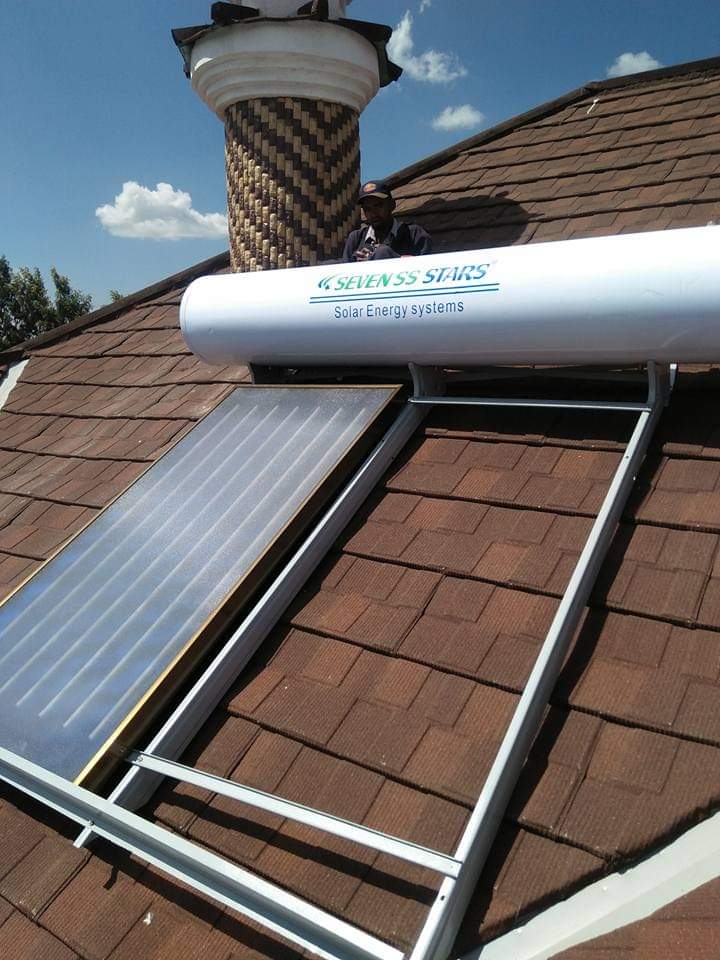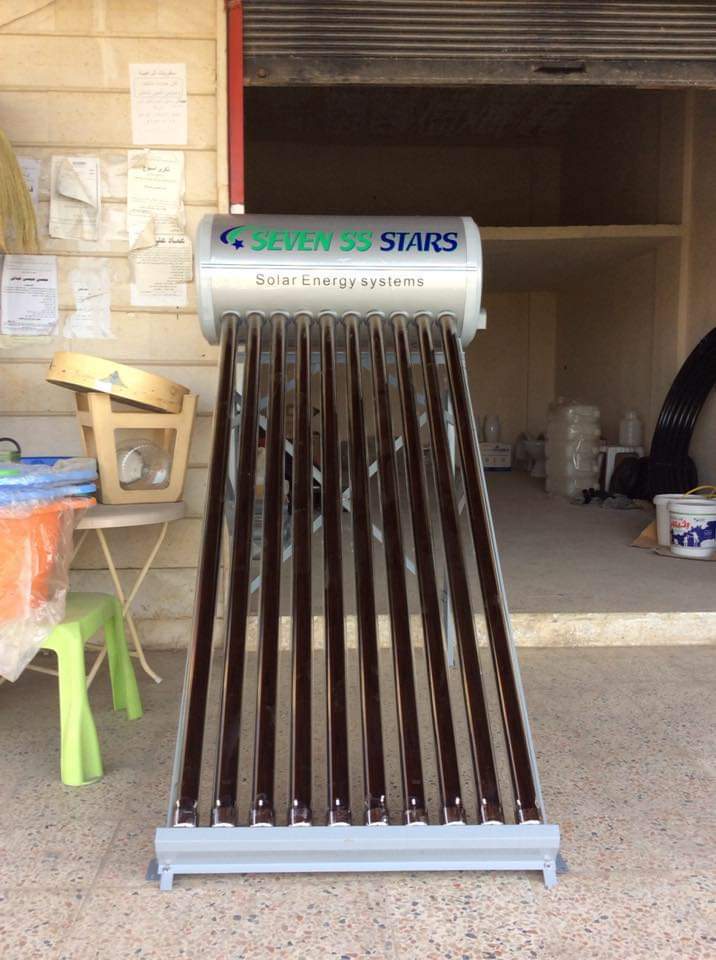
Solar water heaters in Kenya come in a wide variety of designs, all including a collector and storage tank, and all using the sun’s thermal energy to heat water.
Solar water heaters in Kenya are typically described according to the type of collector and the circulation system;
Flat-plate collectors typically consist of copper tubes fitted to flat absorber plates. The most common configuration is a series of parallel tubes connected at each end by two pipes, the inlet and outlet manifolds. The flat plate assembly is contained within an insulated box, and covered with tempered glass.Flat plate collectors are typically sized to cater for a big family size.
Evacuated tube collectors are the most efficient collectors available. Each evacuated tube is similar to a thermos in principle. A glass or metal tube containing the water or heat transfer fluid is surrounded by a larger glass tube. The space between them is a vacuum, so very little heat is lost from the fluid.Since heat loss due to convection cannot cross a vacuum, it forms an efficient isolation mechanism to keep heat inside the collector pipes.These collectors can even work well in overcast conditions and operate in temperatures as low as -40°C. Vacuum life varies from collector to collector, from 5 years to 15 years.. Evacuated tube collectors can cost twice as much per square foot as flat plate collectors.

Circulation Systems
Direct systems circulate water through solar collectors where it is heated by the sun. The heated water is then stored in a tank, sent to a tank-less water heater, or used directly. These systems are preferable in climates where it rarely freezes.Collectors accumulate scale/buildup in hard water areas, unless an ion-exchange softener is used.
indirect, systems use a non-freezing liquid to transfer heat from the sun to water in a storage tank. The sun’s thermal energy heats the fluid in the solar collectors. Then, this fluid passes through a heat exchanger in the storage tank, transferring the heat to the water. The non-freezing fluid then cycles back to the collectors. These systems make sense in freezing climates.The most common heat transfer fluid is an antifreeze/water mix that typically uses non-toxic propylene glycol.
Active solar water heating systems use electric pumps, valves and controllers to move water from the collectors to the storage tank.Our pressurized solar systems require a pump for input and output of water. Pumped systems are more expensive to purchase and to operate. However, they operate at higher efficiency and can be more easily controlled.
Passive systems require no pumps. Natural convection moves water from the collectors to the storage tank as it heats up. Passive systems cost less and require low or no maintenance, but are less efficient. Overheating and freezing are major concerns.
CONTACT US:
Mobile: 0728681222
Inquiry E-Mail: info@sevenssolarkenya.co.ke